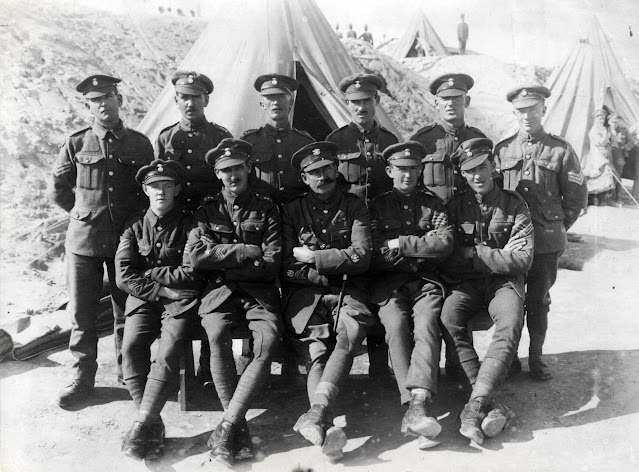24th February 1809 – ON THIS DAY IN ROYAL WELCH HISTORY
Royal Welch Fusiliers Museum
Friday 24 February 2023
1st Bn at the capitulation of Martinique, 1809
Monday 13 February 2023
Tuesday 3 January 2023
24th Battalion
An excellent photograph of what is believed to be some of the SNCOs of the 24th
Monday 5 December 2022
Arthur Askey
#eyahumour @explorearchivesArthur Askey CBE - British Stage, Radio and Film Comic. Born in Liverpool in 1900, only 5'2" he enlisted in the Great War aged 18 into a Bantum Battalion of the Royal Welsh Fusiliers. While in the army he worked with concert parties and this led him to a career as an entertainer, first in Music Hall then Radio and Film. He was the first T.V comedian when John Logie Baird used him in to appear in his early T.V experiments in the 1930`s. In WW2 he served in ENSA entertaining troops overseas.
Wednesday 30 November 2022
#EYABeards
@explorearchives Robert Shields VC was a Welsh recipient of the Victoria Cross.
He was born in Cardiff, Wales, in 1827 and died in Bombay, India, in 1864. On
the morning of 8 September 1856, during the Crimean War, Corporal Robert
Shields volunteered to go along with Assistant Surgeon William Henry Thomas
Sylvester in order to rescue an injured officer who had been incapacitated by a
shot not far from their position outside the city of Sevastopol’s walls during
the siege of the city.
The wounded
officer was one Lieutenant Dyneley, the Adjutant of Shields’ own unit in the
Royal Welch Fusiliers regiment. He had been shot and wounded near the Redan, a
fort built close to Sevastopol, at this time it had been hastily occupied by
more than a dozen Russian soldiers. It was an extremely dangerous and foolhardy
thing to venture anywhere close to the Redan, as they would be well within
range of all manner of enemy guns. Nevertheless, Sylvester and Shields decided
to attempt to save the wounded man.
Together, they
reached the lieutenant; however, they quickly noticed that his wounds were far
more serious than they had anticipated. Sylvester dressed Dyneley's wounds as
well as he was able while under heavy fire from the Redan and returned to the
cover of their trenches, bringing with them the injured man. Dyneley later died
from his wounds.
For their
bravery, both men were awarded the Victoria Cross, subsequently going on
parade for the first presentation of the new medal. Sixty other men were present
at Hyde Park on 26 June 1857. The recipients were made up of both the army and
the navy, and they were presented with the award by Queen Victoria herself.
Wednesday 9 November 2022
Regimental harpists
Earlier this year, at the Wrexham Archive, we researched John & William Roberts, father and son, who both occupied the position of Regimental Harpist in the mid-late 19th century.
9th November 1714 - ON THIS DAY IN ROYAL WELCH HISTORY
9th November 1714 - ON THIS DAY IN ROYAL WELCH HISTORY









_(cropped).jpg)

